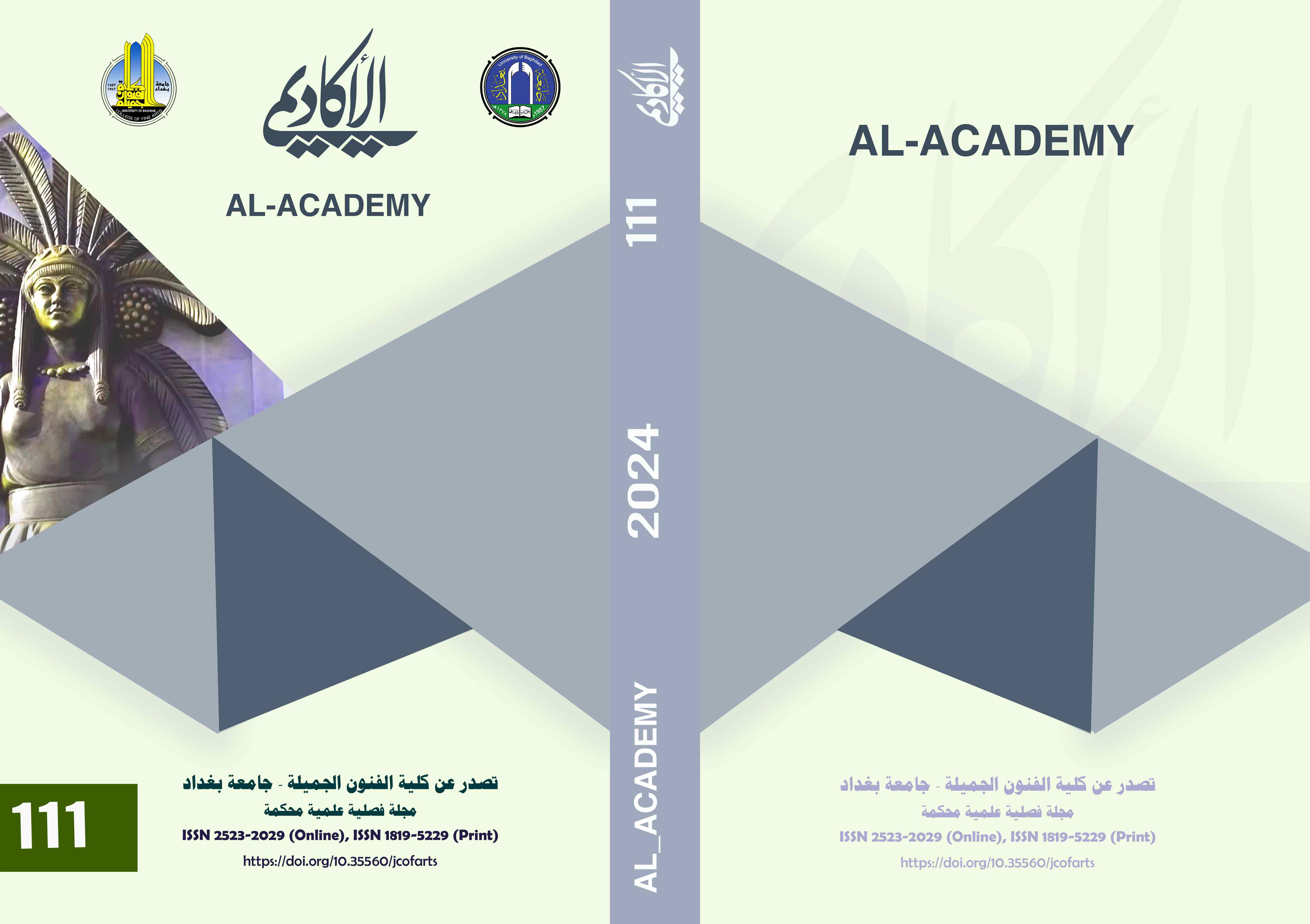The concept of visual patterns in children's theater performances
DOI:
https://doi.org/10.35560/jcofarts1210Keywords:
visual formats, children's theatreAbstract
The technological development in the elements of the production of the theatrical image is related to several vocabulary that is employed in drawing the theatrical landscape, which is directly related to the place, as the mechanism of functioning of the scenography in the children's theater is formed through the system of light with its various devices, visual effects and advanced techniques, as the quantitative and qualitative presence of these two elements can be preceded by technical knowledge that allows defining the art of synchronization and the art of installation, that is, in the sense that each decorative piece must be in its actual place, and its functioning accompanies the functioning of movement and action, until it is completed. Activate this decorative piece and not leave it inactive.
"This is achieved through the paths of light movement resulting from the techniques of installing light in the theatrical show, whether in local movement and changing the sources of light spots, or by using follow-up devices, lasers, or all available kinetic means of light." (Al-Bahli, 2010, p. 195)
Also, the visual elements that contribute to presenting scenographic features for the show must be concerned with the temporal sequence associated with the spatial sequence, and they form the pattern of events, the movement of the characters of the play, the nature of the conflict and the relations between the characters on the one hand and between the characters and the show space on the other hand.
The concept of building or structure, which has come to mean “how a group of coherent elements are organized among themselves, so that each element depends on the rest of the other elements, and this element is determined by its relationship to those elements” (Benabd Al-Aali, 2005: 11).
Therefore, the visual systems and their educational connotations can appear in the performances of the child's theater so that they constitute one of the most important starting points on which the space of the theatrical performance is based, being an integral part of the sensory perceptions that contribute to achieving entertainment and enjoyment in a dramatic manner that the child can comprehend. Positivity and work to change or consolidate his concepts and the constancy of acquired social values and habits, so the visual formats play their role in the space of the child's theater because they perform their function in two ways, the first is towards the visual formats and the mechanism of its operation educationally, and the second is the mechanism of work and its relationship to the scenography of the child's theater.
References
Abdel-Hamid, S. (2005). The Age of the Image - Pros and Cons. Kuwait: The World of Knowledge Series.
Al-Aboudi, J. J. (2016). Scenography, Concept, Elements, Aesthetics, presented by: Salah Al-Qasab, reviewed by: Sami Abdel-Hamid (1 ed.). Baghdad: Dar Adnan for Printing and Publishing.
Al-Bahli, R. S. (2010). The semiotics of light movement in theatrical performance. Al-Academy, 163-180.
Al-Hiti, H. N. (1986). Children's Literature, Its Philosophy, Arts, and Methods. Baghdad: Dar Al-Affair for General Cultural Affairs.
Barba, E., & others. (1999). Actor's Energy - Essays in the Anthropology of Theater. (S. El-Gamal, Trans.) Cairo: Academy of Arts, Center for Languages and Translation Supreme Council of Antiquities Press.
Ben Abd Al-Aali, A. A.-S. (2005). Metaphysics - Science and Ideology (2 ed.). Beirut: Dar Al-Talee'ah for Printing and Publishing.
Benkrad, S. (2019). Image Manifestations - Semiotics of Visual Formats, Casablanca. Cultural Center for Books.
Dupree, R. (2002). The Life and Death of the Image. (F. Ezzahi, Trans.) Morocco: East Africa.
Fadl, S. (1997). Reading the Image and the Image of Reading. Cairo: Dar Al-Shorouk.
Farid, B. H., & Abdel-Hamid, S. (1980). Principles of Theatrical Direction. Baghdad: Ministry of Higher Education and Scientific Research, University of Baghdad, Dar Al-Kutub for Printing and Publishing.
Hussein, S. A.-D., & Abdel-Hamid, S. (1999). the typical movement of the ancient Iraqis and the formation of the actor’s body. Al-Academy(7), 26.
Iser, W. (1985). L’acte de lecture, théorie de l’effet esthétique. éd Mardaga.
Kant, & Grasset, e. (1999). ornithorynque.
Maynell, K. (1987). Motor Learning. (A. A. Nassif, Trans.) Baghdad: Dar Al-Kutub for Printing and Publishing.
Mounin, G. (1974). pour une sémiologie de l’image", in Communication et langages.
Ragheb, N. (2001). Theater Horizons. Cairo: Dar Gharib for Distribution.
Saussure, F. d. (1985). Lessons in General Linguistics, Arabization of Saleh Al-Qarmadi and others. Beirut: The Arab Book House.
Sewell, E. (1992). The Visual Sign - The Rhetoric of Image (Vol. 5).
Suleiman, Z. S. (2011). The Scenography Between Theory and Practice of a Play (Nuzha as a Model). College of Arts Journal , Issue 95.
Wahhab, S. A. (2001). Theatrical Lighting (2 ed.). Cairo: Forum of Thought.
Downloads
Published
Issue
Section
License
Copyright (c) 2024 Morouj jabbar kadhum, mudad Ajeel Hassan

This work is licensed under a Creative Commons Attribution 4.0 International License.













